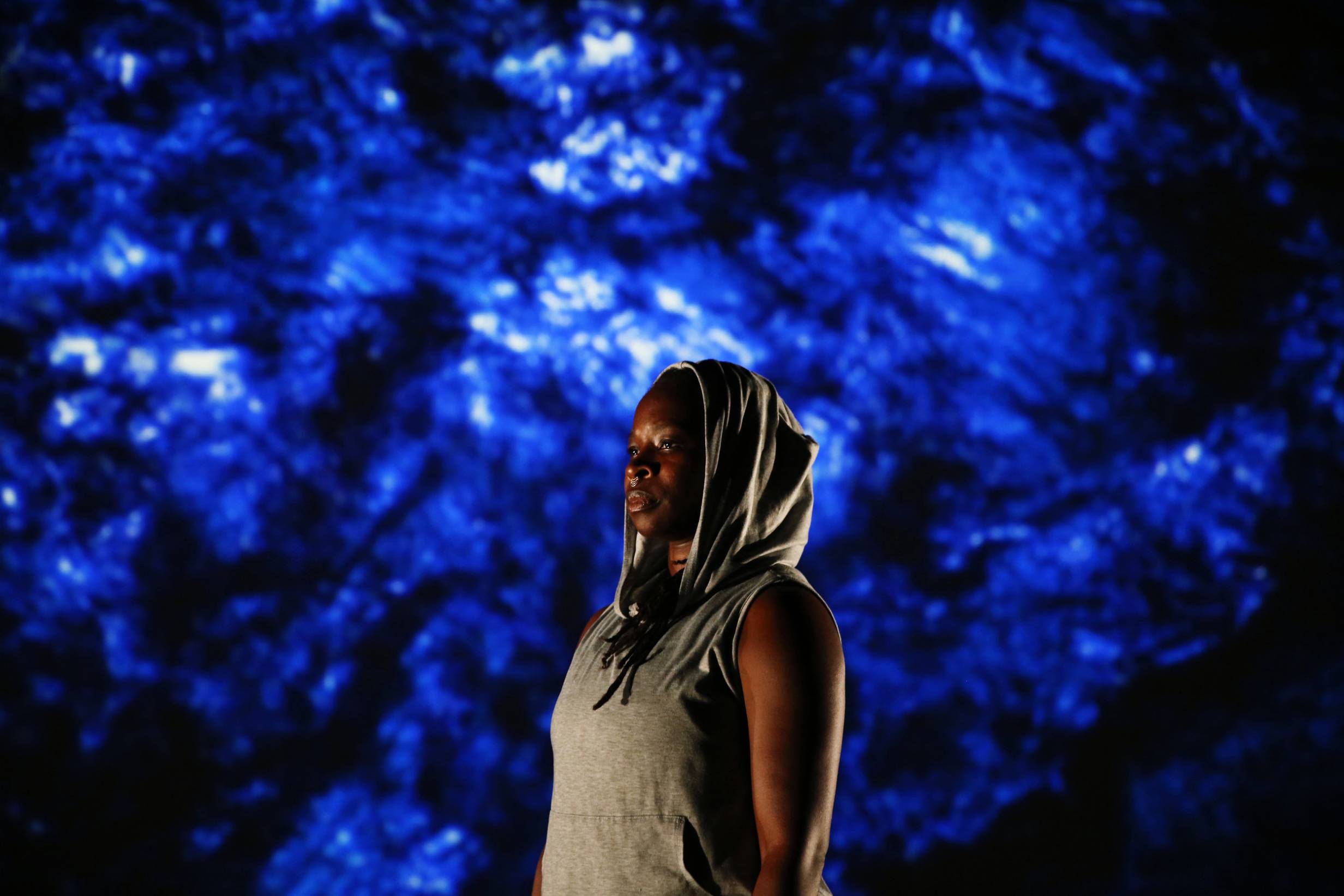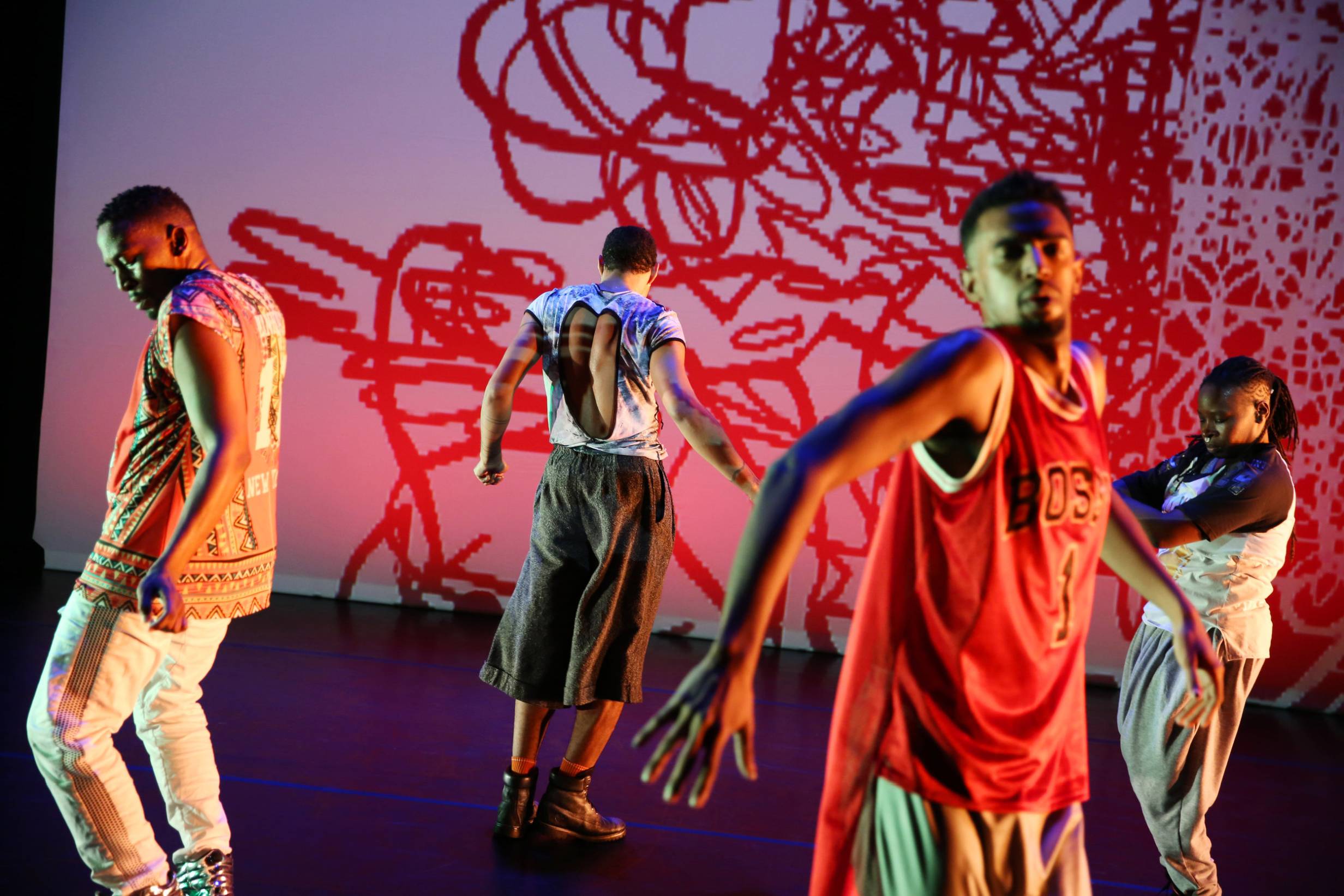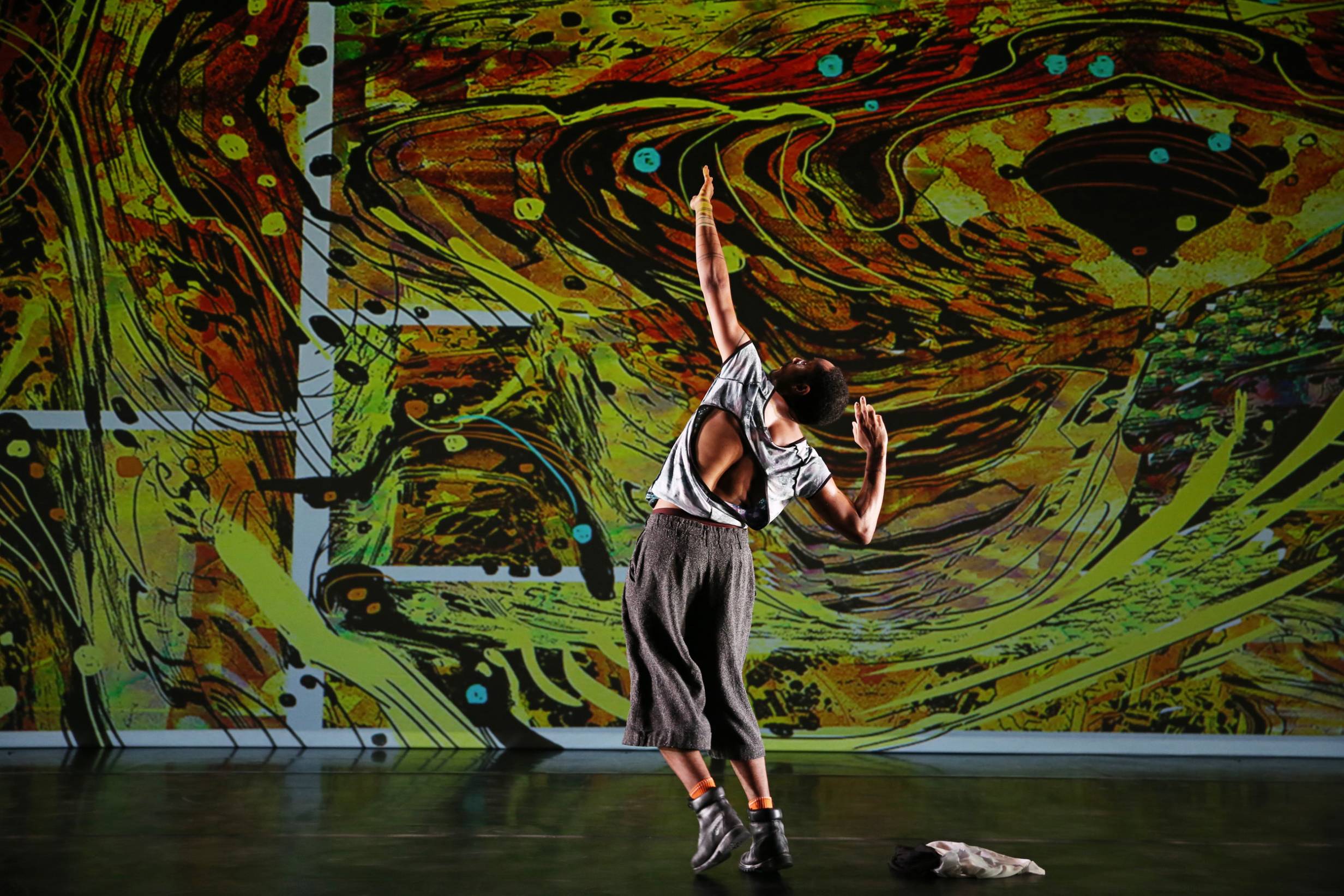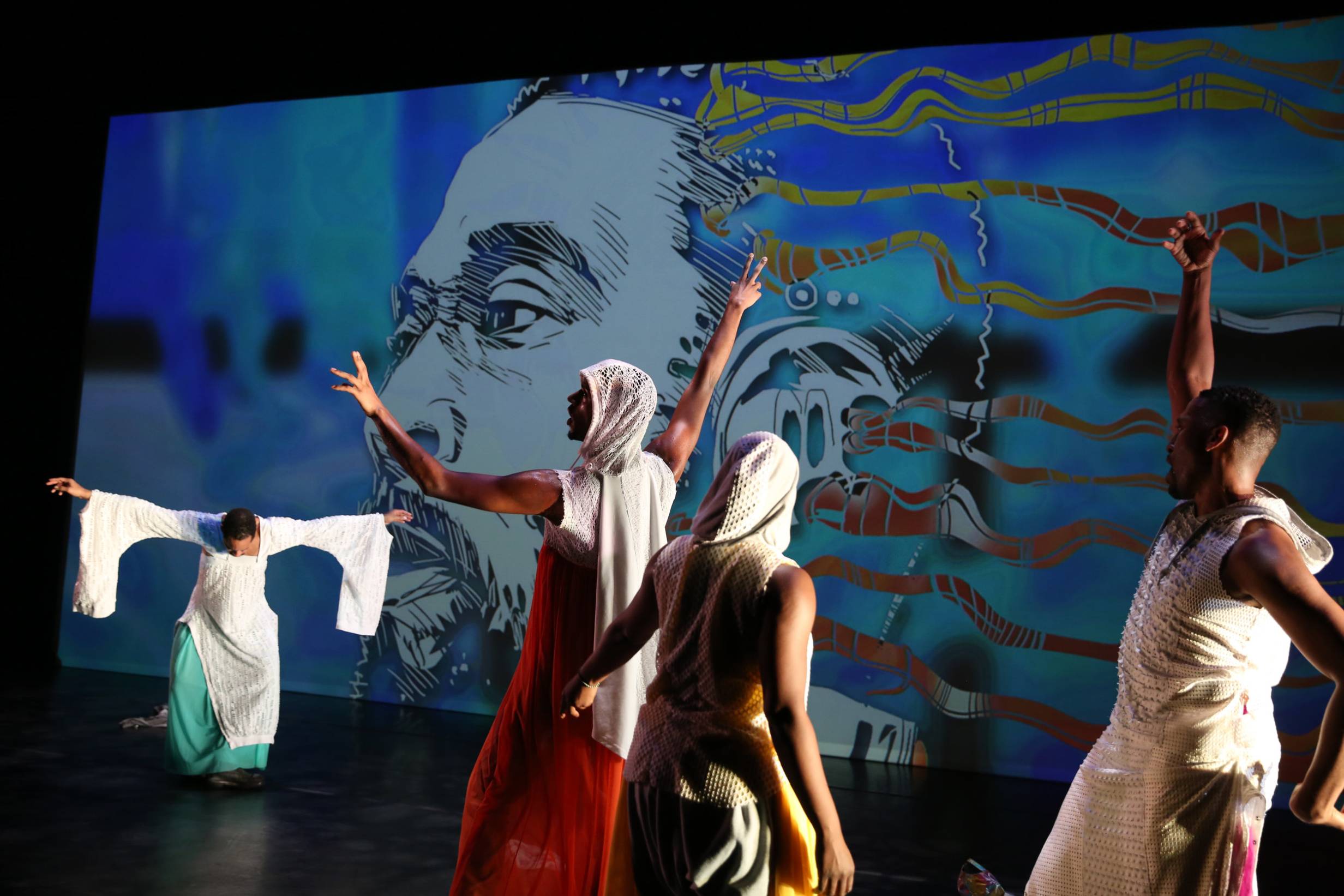On Thursday, November 15th, 2018, Bessie Award-winning choreographer Cynthia Oliver presented her newest work, Virago-Man Dem, at the Krannert Center for Performing Arts. Born in the Bronx and raised in the Virgin Islands, Oliver is a professor of dance and Associate Vice Chancellor for Research for the Humanities, Arts, and Related Fields at the University of Illinois Urbana-Champaign. According to the Krannert Center’s press release for Virago-Man Dem, “Cynthia Oliver breaks with her convention of excavating black women’s worlds to explore the expressive cultures particular to Caribbean and African-American men and male-identified folk.” However, after interviewing Oliver and then going to the performance, I realized that exploring the nuances of black masculinity in this new work is not a departure from excavating women’s worlds, but instead digs more deeply into those worlds and sheds light on how entangled masculinity and femininity are.
From the beginning, Oliver’s voice was present in the work, literally and figuratively. As the house lights faded, Oliver, sitting in the audience, shouted “Go!”. Two dancers stood in the aisles near the audience, the other two were on stage, all of them still, the environment around them moving and shifting. A projected image of clouds rippled forth behind them, gently flickering. The dancers glowed under a warm yellow light which then changed into a deep blue. As if they were standing in twilight, the sun slowly setting, the projection transformed into the surface of blue water. There is a sense that we were shifting through different environments and even time travelling.

Each of the performers sang and shared personal stories with the audience. These moments give me the strongest sense that the audience were connecting more deeply into the feminine through the experiences of the male-identified performers. Jonathon Gonzalez fluctuated from speaking and singing in Spanish to speaking in English, while wearing a flowing sports jersey, sparkling sequined jacket, and twirling a shiny gold article of clothing above his head. He spoke rapidly trying to fill us in on every detail, telling family stories and describing seemingly unrelated situations, such as wearing a Rolex watch, a woman dressed in all red at work, and driving a car up a hill. As he continued telling and retelling the story, he substituted himself for the other characters in the story changing their pronouns, “She was wearing all red…I was wearing all red…”
This resonated with something that Oliver shared in our interview, “I’ve spent most of my career looking at and talking about performing aspects of women’s worlds that I find intriguing. But while doing that, if you separate one gender out of course you’re going to notice what’s happening with the other.” Substituting himself for the other characters in the story dramaturgically brought him closer to them. By telling their story, he was actually telling his own, allowing him to fluctuate between masculine and feminine behavior, from glamorous to athletic movements, from self to other, blurring the distinctions between them, and bringing the audience closer to both.

Later, the dancers were lying on the floor together and humming the beginning of “This Woman’s Work”. This funny and tender moment connected us to women’s stories and foreshadowed the stories that were to come. Originally written and performed by Kate Bush and later covered by Maxwell, we heard the echo of women’s lives and voices in the voices of the male-identified performers as they hummed the familiar tune. At one point, performer Duane Cyrus confided to the audience that although his sister inherited his father’s deep voice, he did not. He inherited his mother’s voice. He begins to sing a song that his mother sang to him and talks about his love for the voices of black women. After an homage to musicians including Aretha Franklin and Whitney Houston, women who are no longer with us but who are still with us, he told us of his mother becoming ill with cancer. He went on to sing “There is a Balm in Gilead”. The voice of his mother filled him, flooded through his voice. I can hear her love for him resonating in the space. Perhaps her love for him allowed him to survive that difficult moment. She was there with and within him.

Throughout the performance, graphic, comic-book style images moved in and out of the screen. The images were at times elemental, referencing nature, at other times, they were archetypal. Sometimes they were abstract, seeming to be familiar images of important male Caribbean and African American leaders, or are portraits of the performers as cyborgs. There were moments when the outlines of the dancers appeared on screen filled with water, fire, earth, wind, or abstract lines and colors. The images take us through a spiritual sense of who the performers are, and take them through the past, present, and future. The work raises questions about what community, family, and lineage are, and how those forces move through us toward a future for black men and black masculinity that is feminist, expressive, fluid, complex, and whole.
At times the dancers moved gesturally, with sharp, mechanical, precise movements, like sudden glitches. The movement fluctuated from abstract gestures to images of sports, fashion/modeling, flirting, everyday postures and poses, waves and acknowledgements. The movements appeared to be assemblages of Oliver’s process of exploring taboos, as well as stereotypical masculine movements. The glitch-like quality of the movement was poetic and reappeared at different moments throughout the performance. In those moments, it was as if the performers were being interrupted, fragmented, and were negotiating those pieces of themselves that make up the whole of who they are, those pieces that do not align with a narrow view of masculinity, those pieces that they may have been told not to express. In this work, those pieces break through and are given expression, moving us to a place of connection.
Photos by Julieta Cervantes at BAM’s Next Wave Festival, October 2017








